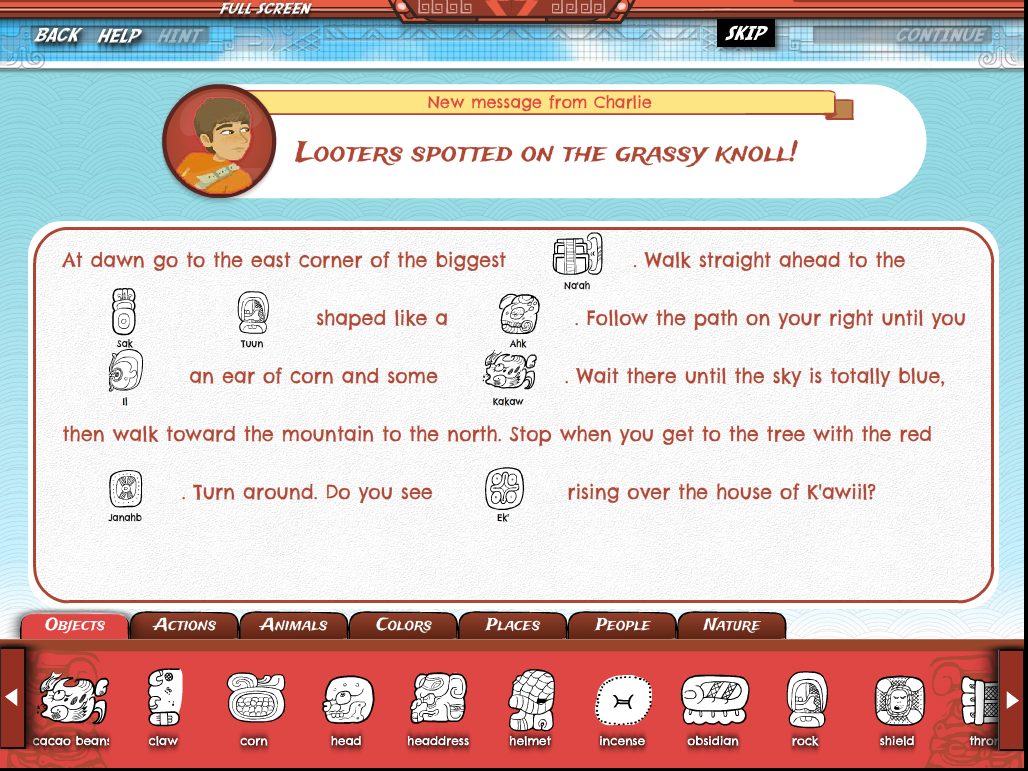The Value of Education Technology: 5 Takeaways from the ETI Summit
Yesterday, the Dig-It! Games™ team attended (and proudly sponsored!) the 2014 Education Technology Innovation Summit in Baltimore, MD. It was a day of panels, and speakers, and learning—with some wonderful educators and edtech leaders.
Here are five key takeaways from this year’s summit:
1. Online courses are quickly growing in popularity as a way to learn.

2. One of the best ways to engage students in content is through a mobile device like a tablet or smartphone.

3. Blended learning stems from a desire to personalize instruction and to give students access to information.

4. Teachers are innovative—(wait, we knew that!)—and they’re looking to collaborate.
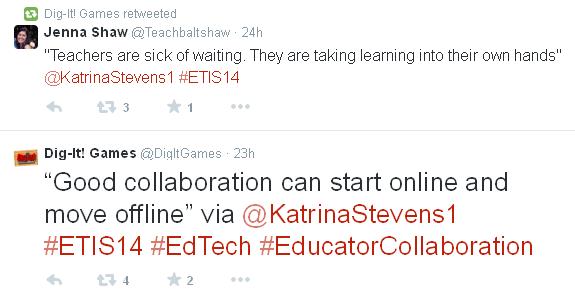
5. Nothing beats seeing the Dig-It! Games logo as a “Hello, and Welcome!” moment.

eSchool News Features Suzi Wilczynski as Contributor
How can we engage all learners? Let students play.
Beating the Back-to-School Blues
The time has come. Students will trickle into classrooms, enthused for the start of a new school year. Their teachers will greet them with a smile and the learning will begin.
Behind the scenes of every great lesson is the hours of planning that a teacher has put into understanding the content, determining what activities will interest his/her students, and carefully planning out the timing to keep students continually engaged.
Dig-It! Games™ knows that the job of a teacher can be stressful—here are five ways we can help:
1) Use our games as review.
It’s the start of the school year. You’re thinking about all the material that has to make its way into students’ heads, building on what they already know, to lead them to grade-level mastery of the curriculum by the end of 180 school days. You know that summer often leads to brain drain for kids—that what they knew at the end of last year may not be as solid now.
Let students explore their knowledge using Dig-It! Games™. They can practice specific, Common Core-aligned math skills using the Loot Pursuit™ series; review reading comprehension and strengthen their problem-solving skills with the award-winning Mayan Mysteries™; solve the puzzle within Can U Dig It!™; or transfer what they know of our own number system to the Maya number system through Maya Numbers™.
Build up your students for the rigor of the next school year and help them review what they know through interactive, engaging games. You’ll save time and they’ll love getting the chance to play.
2) Check out our Teacher Management System.
The classroom edition of the top-rated Mayan Mysteries™ includes one-year licenses for up to 30 students. Our Teacher Management System (TMS) provides you with the powerful tool to track students’ progress and performance within the game. Whether students are playing at school or at home through online access, you can follow individual and class progress on standards-based assessments targeted for each grade level.
3) Plan your units ahead of time to engage kids.
Whether you’re focused on informational literacy or teaching a social studies curriculum, incorporating games like Mayan Mysteries™ or Maya Quiz™ within the unit will give your students the opportunity to show what they know. Because games engage students of all learning styles, including games in your unit plans and lessons will not only endear you to your class, but will also allow students to reach their academic potential. Students will learn new information, practice and strengthen skills, and assess what they’ve learned. If you want to keep track, try our classroom edition. If not, download single-user games onto iPads. Make it work for your classroom, and your kids.
4) Try before you buy.
Don’t waste your budget on a game your students won’t use. Many of our games are free to download, with in-app purchasing available. This gives you the opportunity to cut down on cost. Give your students the chance to play Mayan Mysteries™ and see how much they love game-based learning before purchasing it and the new complementary app, Maya Quiz™. If you’re interested in math review, the first game in the Loot Pursuit™ series—Tulum—is available to download for free; then you have the opportunity to purchase the recently-released Loot Pursuit: Pompeii™ for even further skills-building. Both MayaNumbers™ and Can U Dig It!™ are available to download at no cost so you can see how high-quality and engaging our games are.
5) Game Play = Happy Students
Games have been proven to engage students and increase motivation. They’ve shown promise in closing the gap for struggling students. But most importantly, kids like games. They like having the opportunity to play. Yes, they are learning; but they’re having such a great time playing that the educational aspect is a bonus. Turn your students into life-long learners by blending education and fun.

3 Reasons to Play Dig-It! Games New Maya Quiz App
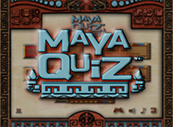
1. Got a few minutes to spare? Choose to learn.
You could play a round of Candy Crush and mindlessly swipe to match three candies…or you could play a round of Maya Quiz™ and engage with 100% authentic, accurate content. Stretch your brain! Each round of play in Maya Quiz™ gives you ten questions within five categories: Math & Time, Daily Life, Religion & Government, Central American Geography, and History. See how much you can learn in just a few minutes.

2. Don’t worry—you’re not in this alone.
In the classroom setting, assessments are often taken in a sit-down, time-restricted environment in which students individually answer questions to test their mastery of a subject. Maya Quiz™ is untimed, allowing for discussion with friends or researching the answer on your smartphone. It’s okay not to know the answer right away. The goal of the game is not only to see how much you know, but also how much you can learn—in a way many prefer to learn.

3. It’s not just for kids!
Consider yourself an erudite Maya expert? Show how much you know by testing your knowledge of Maya history and culture with Maya Quiz™. Doesn’t matter if you are a sixth-grader who finished a Maya unit in social studies, a college student studying archaeology, or a trivia-lover who just wants to play—Maya Quiz™ offers more than 100 randomized questions to check your understanding of the Maya. Make it a family bonding experience by playing and collaborating together to determine answers or compete to reach the highest score and prove your expertise.

Digging Into Archeology: Summer Fun for Families
Dirt? Digs? Discovering artifacts? Learning about archeology can be fun for kids of all ages. If you’re looking for ways to get the whole family involved, try these three ideas to build in summer learning fun.
1. Layer Cake Archeology
Who doesn’t like to eat cake? Digging (and eating) the layers of a cake is a fun and easy way for kids to learn the basics of archaeological excavation. Tie in a baking session to create three layers of a cake, then secretly hide small toys into each of the baked layers. Stack the layers on top of each other and place the cake on a large table with a plastic tablecloth. Digging can get messy. Kids will be able to record finds, preserve artifacts in baggies, and snack on something delicious.

2. Shoebox Dig
When archeologists first begin excavating a site, the layers of dirt are not visible to them. This project mimics the “blind dig” the archeologists face. Have each person in your family create a shoebox excavation site, layering dirt and soil on top of carefully placed artifacts like shells or coins—remember, the newest materials should be placed towards the top layer of the soil! They should take notes on the different artifacts they have buried and where they are located. When each excavation site is finished, have them trade and unearth the unknown artifacts, layer by layer. Keep track of what has been found!
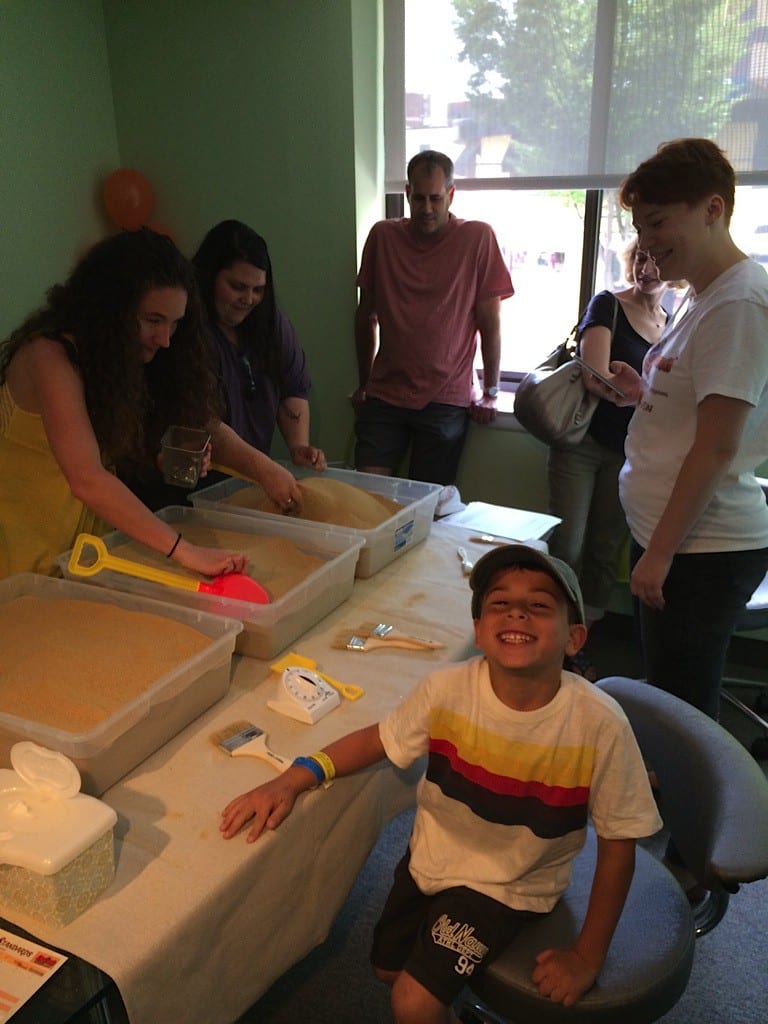
3. Yard Dig
Create a home-based project for your kids through a yard dig. While preparation may be time-consuming, having your children participate in a project that is closest to a real-life dig will let them see how an archeologist works. An excavation site of 5 ft x 2 ft will allow older children to section off areas for digging, conduct field work, and record notes of their finds. Materials buried can include charred wood, rocks or stones, scraps of fabric, larger shells or broken pottery. Your children can piece together the story of an imaginary culture through this larger yard dig.

Archeology is Everywhere
Six Places to Take Your Budding Archeologists
Summer travel season is upon us. If you’re planning a family vacation, consider these locations to take your mini archeologists to explore. But first, visit the National Park Service’s archeology website for kids to help them learn what archeologists do and how they do it.
1) American Museum of Natural History, New York, NY
Get your kids excited to head to the American Museum of Natural History by visiting their website created just for kids. Use evidence and clues to determine where artifacts were found at an Incan archeological site. Test their archeology knowledge with a quick quiz. Listen to interviews with archeologists. Explore the ancient city of Petra. Then make your way to the museum to discover artifacts in person.
2) University of Pennsylvania Museum of Archeology, Philadelphia, PA
The Penn Museum of Archeology and Anthropology offers exhibits to give your children insight into the how artifacts make it from a dig site to a glass-encased museum. Check out their “Artifact Lab” on conserving Egyptian mummies. Kids have the opportunity to see how conservators protect, restore and preserve artifacts found by archeologists in the field, including Egyptian artifacts like mummies. Conservators are even available to answer questions from curious visitors. For the summer, they are offering tickets at a reduced price for $10.00 each for all adults and children.
3) Hampson Archeological Museum State Park, Wilson, AR
Located in northeast Arkansas, this museum exhibits a nationally renowned collection from the Nodena site, a 15-acre village that once thrived on a bend of the Mississippi River. Hampson Archeological Museum interprets the lifestyles of a farming-based civilization that lived there from A.D. 1400 to 1650. Artifacts and exhibits share the story of this early aboriginal population of farmers who cultivated crops and supplemented their food resources with hunting native game while developing its art, religion and political structure along with a thriving trading network. Guided tours are available and admission is free.
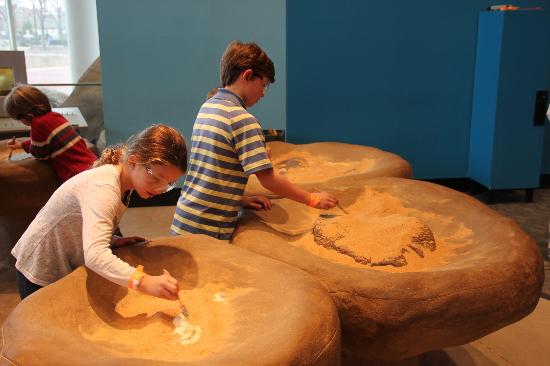
4) Maryland Science Center, Baltimore, MD
The Maryland Science Center features family-friendly science exploration, including their “Dinosaur Mysteries” exhibit. This permanent exhibit contains a working field lab and dig pits, allowing kids to handle the tools archeologists and paleontologists use to discover artifacts of ancient cultures or fossils.
5) Peabody Museum of Archaeology and Ethnology, Cambridge, MA
This museum is connected with the Harvard Museum of Natural History, so one ticket covers both museums. The Digging Veritas exhibit shows how students lived at Harvard in the colonial times through archeological excavations done on campus, which found evidence of the Harvard Indian College. Explore the importance of rivers in Native American culture with an exhibit on birchbark canoes. Encounters with the Americas offers artifacts from the native cultures of Latin America through Maya and Aztec civilizations.
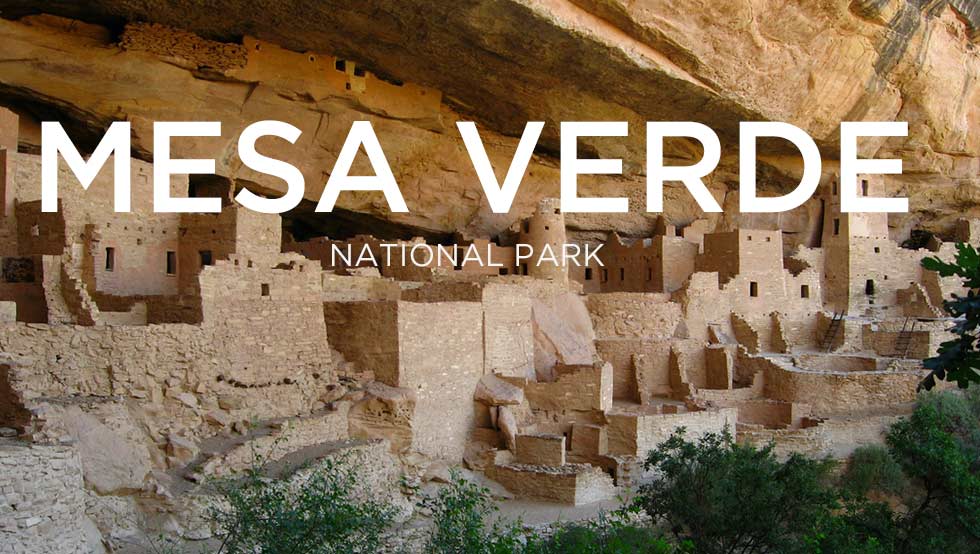
6) Mesa Verde National Park, Mesa Verde, CO
If you’re looking for a real archeological dig site, try Mesa Verde National Park in Colorado. Mesa Verde has over 4, 700 archeological sites with many more left to be discovered. An early civilization made this location their home for over 700 years and their history is still being explored. You’ll discover how ancestral Puebloans lived– and learn why they left this place. One of the most awe-inspiring sites is the dwellings that were built into the side of a cliff. These structures ranged in size from one-room storage units to villages of more than 150 rooms.





